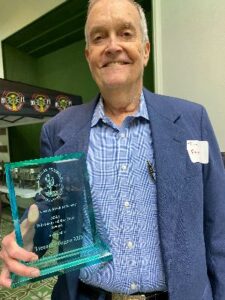FREE Public Health Forum to discuss topics facing healthcare providers in Pima County Pima County…
PCMS Member Corner: Why Participate in Medical Societies?
Why Participate in Medical Societies?
 Physicians are negatively treated from all sides. The Federal government tries to decrease compensation. The Federal and State Governments pass laws to limit and control physician practice. Companies provide insurance options for their employees which limit which physicians they can see. If physicians are employed, their employers control the care that they can provide. Patients complain about multiple aspects of their care. There is little that physicians can do about this on their own.
Physicians are negatively treated from all sides. The Federal government tries to decrease compensation. The Federal and State Governments pass laws to limit and control physician practice. Companies provide insurance options for their employees which limit which physicians they can see. If physicians are employed, their employers control the care that they can provide. Patients complain about multiple aspects of their care. There is little that physicians can do about this on their own.
The American Medical Association was formed to deal with these problems on a national level, including dealing with Congress. The Arizona Medical Association (ArMA) and other state medical societies were formed to deal with problems on a state level, including the State Legislature, and sometimes bring them to the National level.
The Pima County Medical Society and other county medical societies deal with issues on a local level, and participate in, and cooperate with the ArMA. Maricopa and Pima are the only 2 Arizona county medical associations. AHAC is the Arizona Health Advocacy Coalition, which includes PCMS and other Arizona chapters of National Medical Societies such as the American College of Physicians (ACP). AHAC meets monthly when the Legislature is in session and prn.
By belonging to Medical Societies at all levels, and particularly by participating in events and on the Boards of these societies, physicians can have direct input on issues which affect physicians at local, state and national levels. Every physician should belong to these medical societies and participate in governance if possible! Physician members are welcome at all PCMS BOD meetings.
Written by Dr. Tim Fagan
September 2023
Dr. Fagan is a twice Past President of PCMS and Current BOD member; Former BOD member of ArMA and Alternate Delegate to the AMA from ArMA; and Treasurer and Governor’s Council member of the Arizona Chapter of ACP. He spent 25 years in full-time academic medicine and 13 years in a large, physician-owned and governed private practice.
